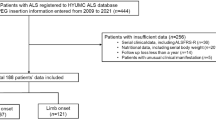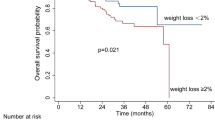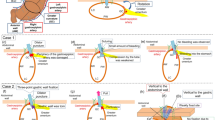Abstract
Our experience with percutaneous endoscopic gastrostomy (PEG) in spinal cord injured patients is described. We have shown it to be a safe, comfortable and easily managed method of providing an adequate nutritional and fluid intake in patients requiring long-term tube feeding. It avoids the risks of intravenous feeding and the serious complications of oesophageal ulceration and stricture, which may occur with prolonged nasogastric intubation.
Similar content being viewed by others
Log in or create a free account to read this content
Gain free access to this article, as well as selected content from this journal and more on nature.com
or
References
Gauderer M W L, Ponsky J L, Izant R J . Gastrostomy without laparotomy: a percutaneous endoscopic technique for feeding gastrostomy. J Pediatr Surg 1980; 15: 872–875.
Moran B J, Frost R A . Percutaneous endoscopic gastrostomy in 41 patients: indications and clinical outcome. J R Soc Med 1992; 85: 320–321.
Frost F, Rosen B, Begley J, Lee S B . Judicious use of surgical feeding tubes in SCI acute care. J Am Paraplegia Soc 1994; 17: 121.
Bodley R, Banerjee S . Radiological percutaneous gastrostomy placement for enteral feeding. Paraplegia 1995; 33: 153–155.
Author information
Authors and Affiliations
Rights and permissions
About this article
Cite this article
Frost, R., Rivers, H., Tromans, A. et al. The role of percutaneous endoscopic gastrostomy in spinal cord injured patients. Spinal Cord 33, 416–418 (1995). https://doi.org/10.1038/sc.1995.92
Issue date:
DOI: https://doi.org/10.1038/sc.1995.92
Keywords
This article is cited by
-
Percutaneous endoscopic gastrostomy
Spinal Cord (1996)



